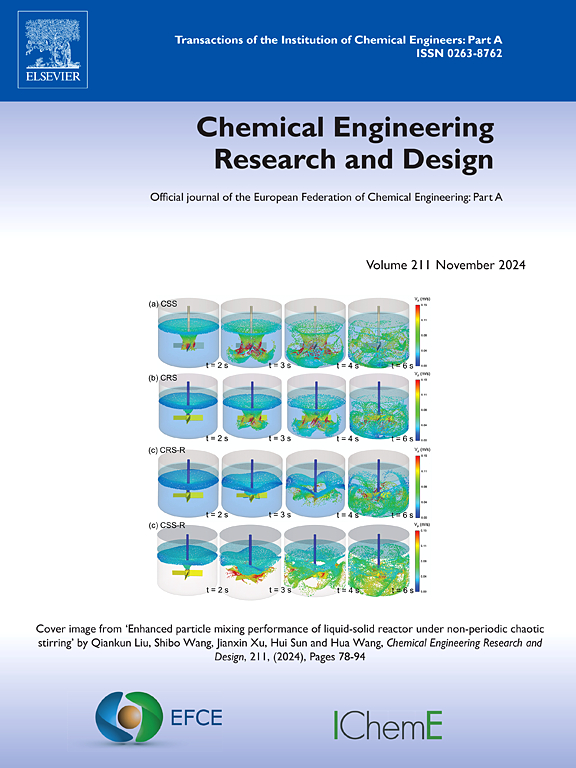Aqueous phase reforming of glycerol to 1,3-propanediol using noble metal doped Ni/CeO2
IF 3.7
3区 工程技术
Q2 ENGINEERING, CHEMICAL
引用次数: 0
Abstract
1,3-Propanediol, a vital compound with wide industrial applications, holds promise as a key product derived from aqueous phase reforming and in-situ glycerol hydrogenolysis. In this study, we are investigating the potential impact of noble metal (Ir, Pd, and Ru) doping on Ni/CeO2 catalysts, aiming to uncover the mechanisms responsible for enhanced reaction kinetics and catalytic performance. Our investigation thoroughly explores the physicochemical properties of the catalysts, utilizing many analytical techniques including FESEM-EDX, TEM, H2-TPR, NH3-TPD, BET, XRD, XPS, and ICP-OES. Within the controlled environment of our autoclave batch reactor, operating specifications of 20 % glycerol, 20 bar, and 230 °C are carefully maintained during the 3 h evaluation period. Among the synthesized catalysts, Pd-doped Ni/CeO2 stands out as the leading candidate, demonstrating superior physicochemical properties and catalytic effectiveness. Glycerol conversion rates soar up to 86.66 %, with 1,3-propanediol yields reaching 31.77 %. The kinetics reveal a compelling narrative of first-order reactions, supported by a modified Arrhenius equation featuring an activation energy of 12.203 kJ/mol and an R2 value of 0.947. This research marks a breakthrough in cost-effective, high-yielding glycerol transformation, signaling a notable shift in industrial catalysis. Noble metal-doped Ni catalysts are set to redefine traditional processes.
求助全文
约1分钟内获得全文
求助全文
来源期刊

Chemical Engineering Research & Design
工程技术-工程:化工
CiteScore
6.10
自引率
7.70%
发文量
623
审稿时长
42 days
期刊介绍:
ChERD aims to be the principal international journal for publication of high quality, original papers in chemical engineering.
Papers showing how research results can be used in chemical engineering design, and accounts of experimental or theoretical research work bringing new perspectives to established principles, highlighting unsolved problems or indicating directions for future research, are particularly welcome. Contributions that deal with new developments in plant or processes and that can be given quantitative expression are encouraged. The journal is especially interested in papers that extend the boundaries of traditional chemical engineering.
 求助内容:
求助内容: 应助结果提醒方式:
应助结果提醒方式:


